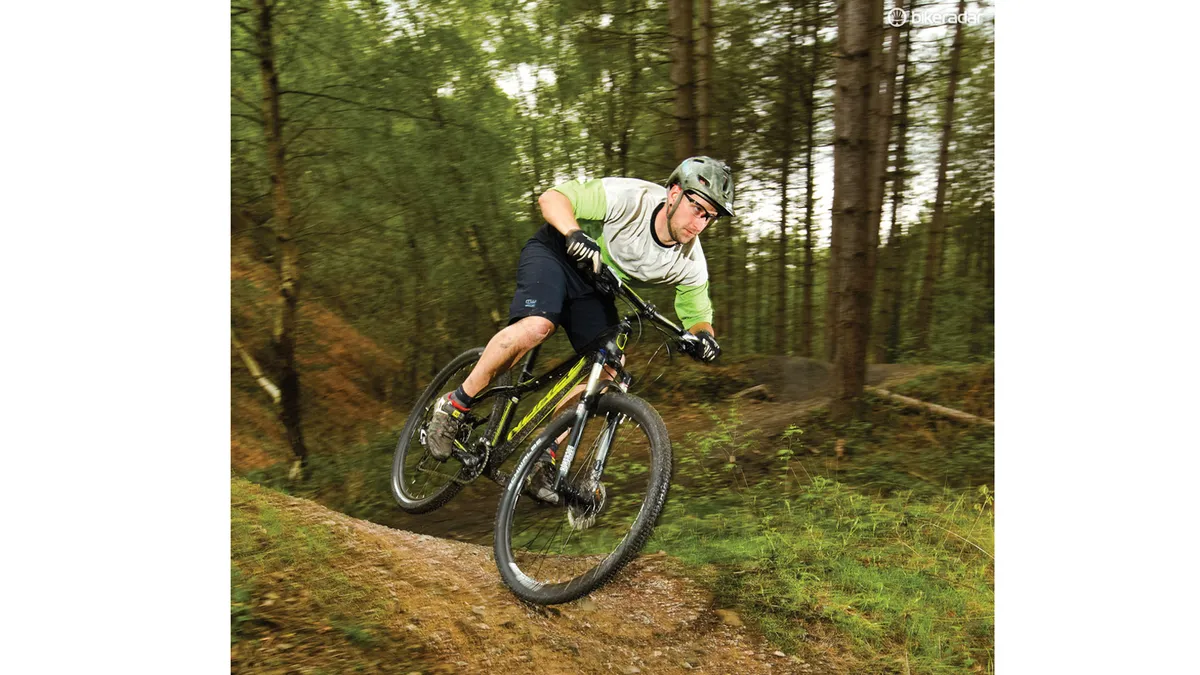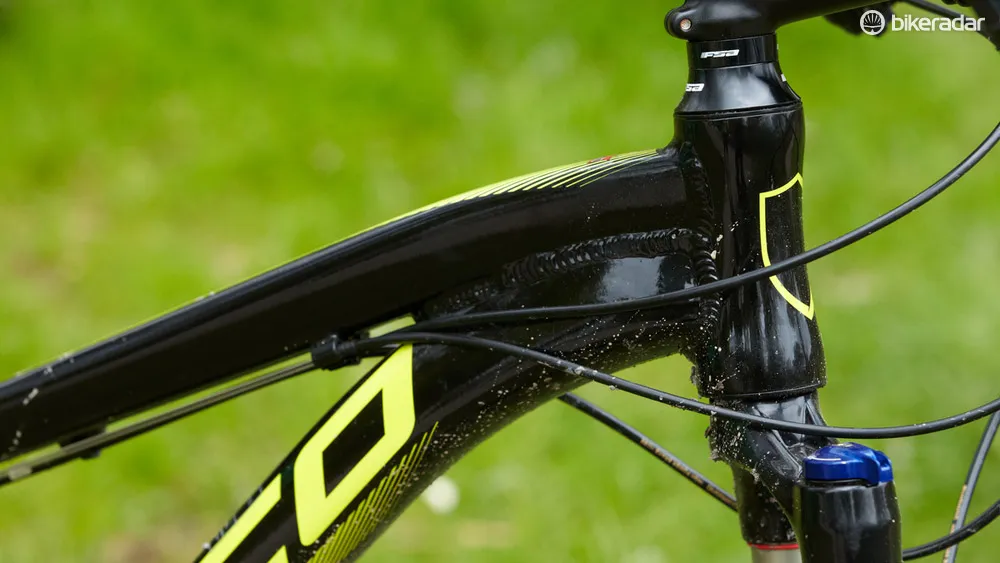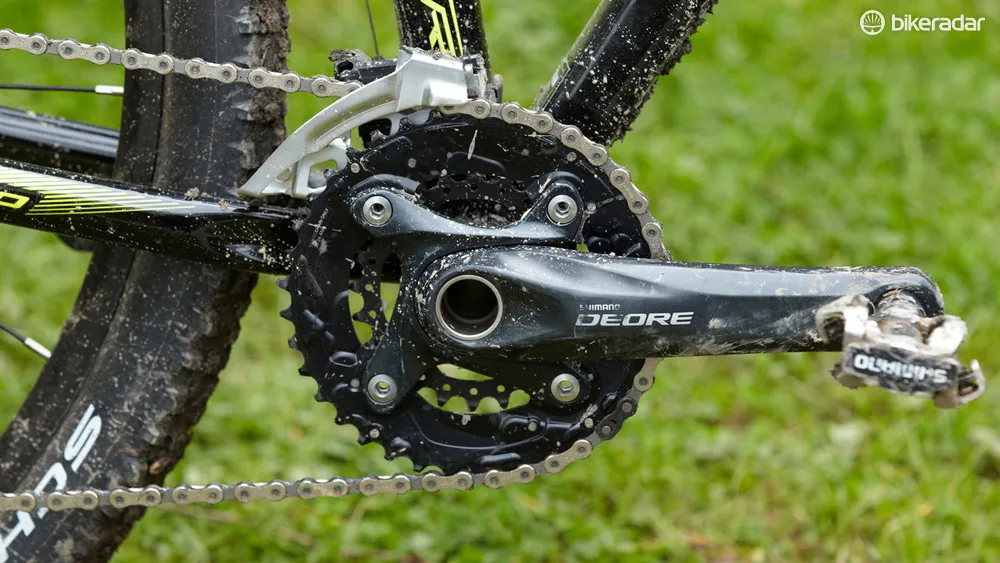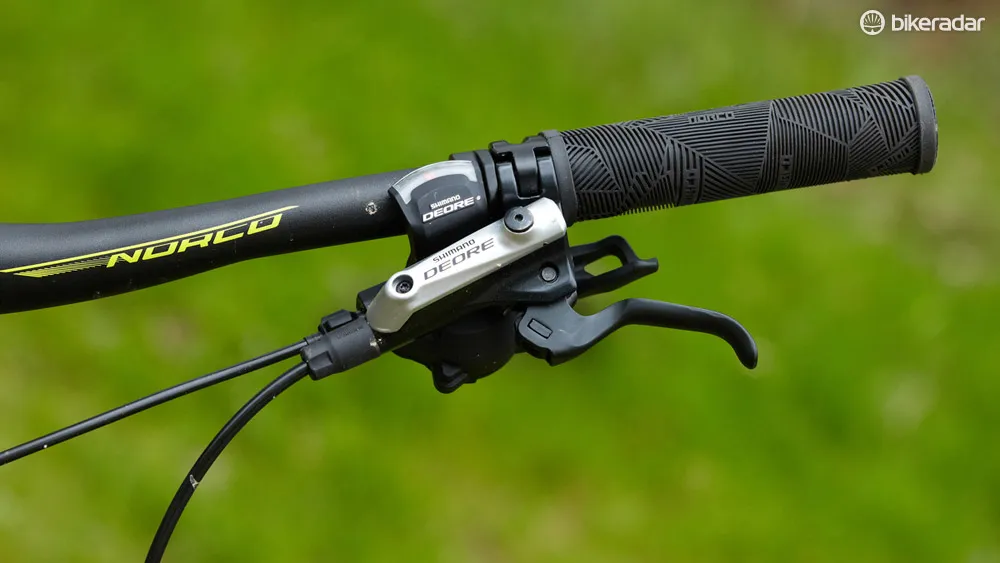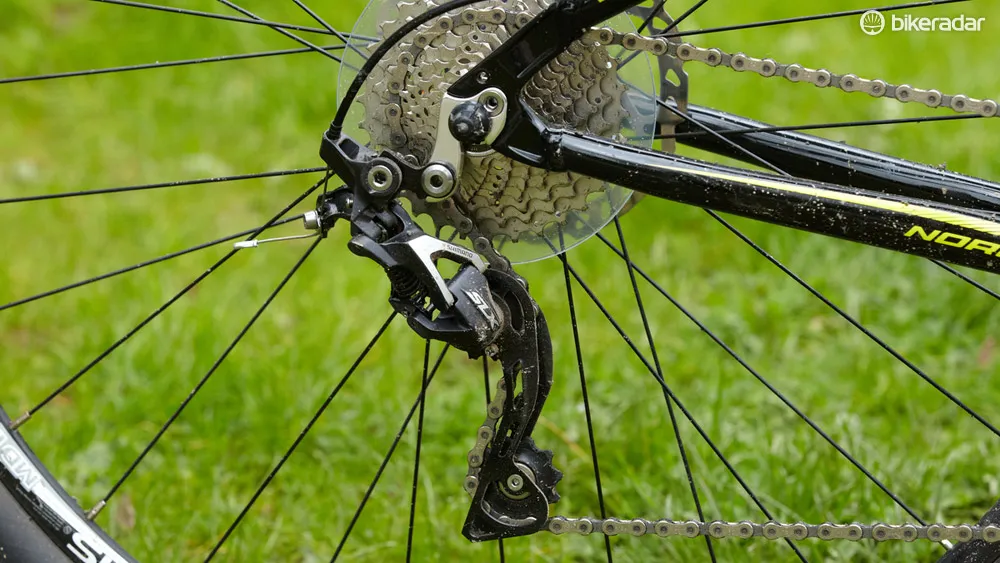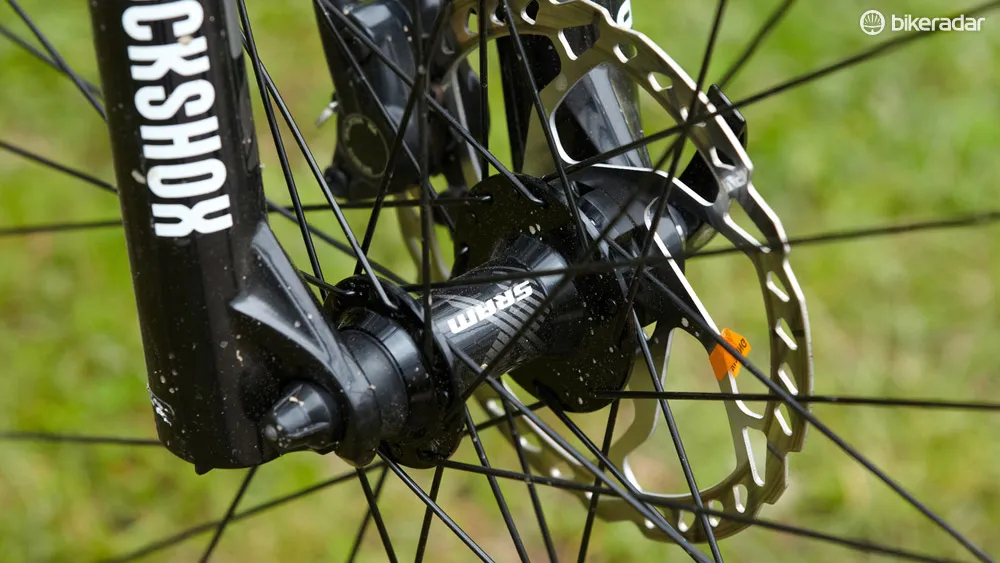Most manufacturers make wheel size choices for you, so if you want a certain bike it’ll come with a certain wheel size. Norco cheerfully sticks two fingers up at conventional wisdom by offering the Charger hardtail with a choice of 650b or 29in wheels (and even 26in wheels for the vertically challenged).
The 9.1 is the range-topping big-wheeler, combining wagon hoop easy-rolling with a 100mm (3.9in) travel fork, agile cross-country geometry and a Shimano transmission. Is this Canuck contender worth the cash?
Frame and equipment: some good choices, some strange ones
Its radically dropped top tube – with curved seat tube support – and compact rear triangle give the Charger a silhouette that, in the interests of politeness, we’ll call 'distinctive'. It’s also a layout that provides an unusually decent amount of standover clearance for a big-wheeler. If you’re shorter in stature that can be an important consideration, though smaller riders might want to consider the 650b option for even more room.
Curving stays give decent mud clearance in spite of the tight rear end, which is good news if you like to ride in all weathers. The pronounced curve and wide, flat profile of the down tube add up to a rigid backbone around which to build the rest of the bike. For reasons that aren’t clear though, Norco’s designers have decided to forgo the added stiffness and strength benefit of a tapered head tube and matching fork steerer. There are rack mounts out back, so this is a bike that could easily double up for load hauling and commuting duties.
Holding up the front is 100mm of air sprung travel, courtesy of a RockShox XC 30 Gold suspension fork. We’re glad to see an air fork on a bike in this price bracket – they’re easy to set up for different rider weights and styles, and also tend to perform better than the cheaper coil sprung alternative. The 9mm quick-release axle is old technology and does nothing to improve steering accuracy, but given this Norco’s cross-country aspirations it’s nothing to lose sleep over.
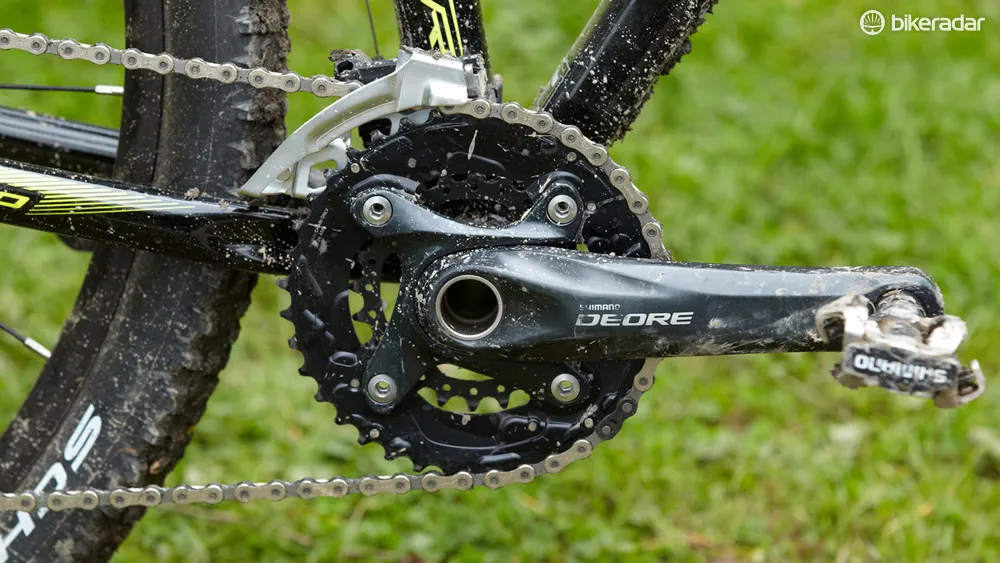
Shimano Deore crank
Norco says it's chosen Shimano drivetrains for the Charger range because they “deliver reliable performance ride after ride”. While it’d be easy to dismiss this as lazy marketing hype, we’re not going to argue – for our money, the Deore and SLX components making up the Charger 9.1’s transmission continue to set the benchmark for performance and reliability in the mid-range.
We’ve no complaints with the rest of the kit either, though the lack of lock-on grips at this price does seem a bit stingy. It’s a small point, but one that can make all the difference – especially if you ride in the wet a lot.
Ride and handling: neither one thing, nor the other
Norco has a deserved reputation for producing bikes of a gravity-fuelled persuasion, which may go some way to explaining why the Charger has the slight air of a cross-bred mongrel with an identity crisis.
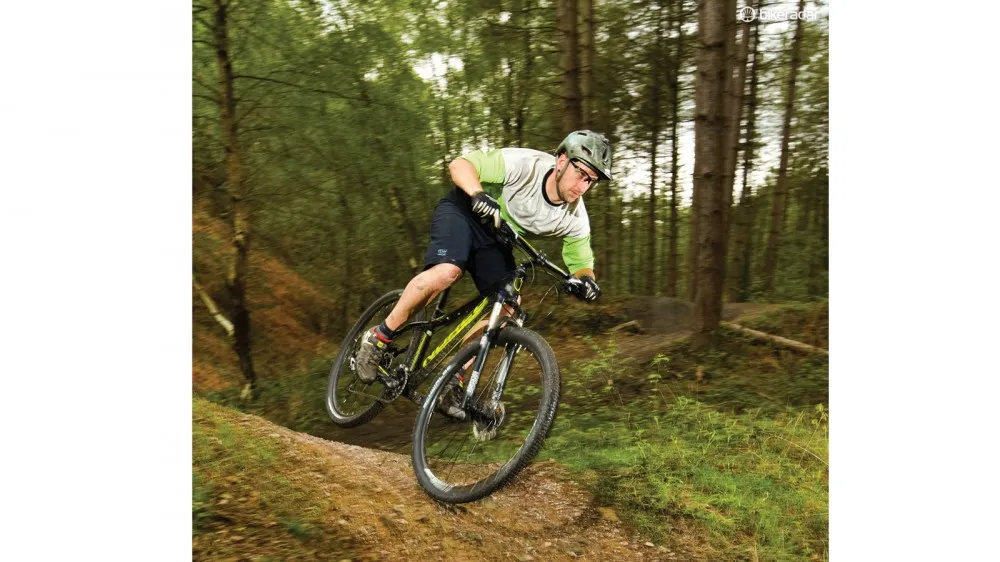
The Charger acquits itself well enough whether you're powered by gravity or fighting it, but ultimately feels unsure of what it's supposed to be
On the one hand, it’s got the compact top tube and huge standover of a burly trail bike that wants to be thrown around. On the other, it’s got a stem long enough to put the handlebar way out towards the front axle, which looks like a desperate attempt to regain some cross-country friendly cockpit room at the expense of steering agility. It doesn’t help that, by current standards, the head angle’s on the steep side, too.
Luckily, as soon as you climb aboard and start to turn the pedals, it all starts to make a bit more sense. While it may lack the flickable playbike feel of some of the shorter stemmed, slacker angled competition, the Norco goes where you want it to, when you want it to go there. And that’s all you can really ask of a cross-country machine, realistically.
We were concerned initially that the compact rear triangle might translate into a harsh ride, but that also turned out to be unfounded. Whether it’s the snaky stays, a bit of help from the easy-rolling big-diameter wheels or a combination of both, the Charger successfully negotiates the tricky balance between snappy power delivery and comfort. In every trail scenario we threw at it – from slow technical climbs to flat out, big ring, rock dodging descents – it acquitted itself well.
But despite this all-round competence, we never truly warmed to the Norco. Good at most things without excelling in any one area, the Charger lacks both the outright pace of a purist cross-country bike and the head-banging fun of a more trail-orientated one. Still, if your aspirations are more cross-country than gravity, it’s worth a second look.

